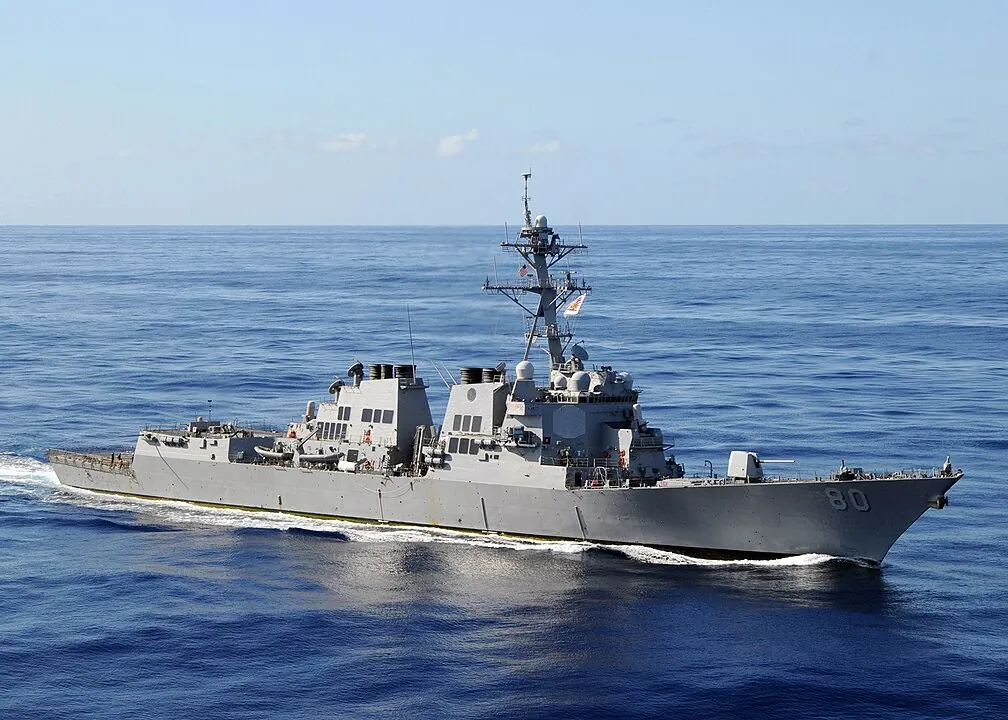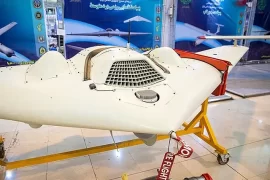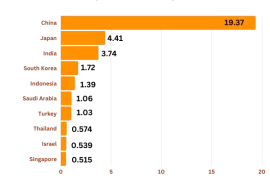The question of whether Chinese destroyers are better than their US counterparts is a complex one, steeped in the nuances of naval warfare, technological advancements, and strategic priorities. Both the United States Navy (USN) and the People’s Liberation Army Navy (PLAN) operate some of the most advanced destroyers in the world, each designed to meet specific operational needs. This article makes a comparison of Chinese Destroyers and US Destroyers, focusing on their types, capabilities, and recent developments, to assess their relative strengths.
Destroyers are fast, maneuverable warships designed to escort larger vessels, protect fleets from threats like submarines, aircraft, and missiles, and project power through multi-mission capabilities. Modern destroyers are equipped with advanced radar systems, vertical launch systems (VLS) for missiles, and sophisticated sensors, making them critical assets in naval warfare. The US and China have invested heavily in their destroyer fleets, but their approaches differ in terms of design philosophy, production pace, and technological focus.
Chinese Destroyers: Types and Capabilities
China’s naval modernization has been rapid, with the PLAN fielding a growing fleet of destroyers that are increasingly sophisticated. As of 2025, the PLAN operates approximately 41 destroyers across eight classes, with the most notable being the Type 055 and Type 052D.

Below is a list of key Chinese destroyer types and their capabilities:
Type 055 (Renhai-class Cruiser)
- Displacement: ~12,000–13,000 tons
- Armament: 112 VLS cells (HHQ-9 surface-to-air missiles, YJ-18 anti-ship missiles, CJ-10 land-attack cruise missiles, anti-submarine torpedoes), 1 x 130mm gun, anti-submarine weapons, and close-in weapon systems (CIWS).
- Capabilities: The Type 055 is China’s most advanced surface combatant, often classified as a cruiser by the US due to its size and firepower. It features stealth design, advanced radar (Type 346B AESA), and dual-band radar systems. It excels in anti-surface warfare, air defense, and command-and-control roles, serving as a carrier escort or fleet flagship. Eight are in service, with plans for up to 16.
- Cost: Approximately $920 million per unit.
Type 052D (Luyang III-class)
- Displacement: ~7,500 tons
- Armament: 64 VLS cells, 1 x 130mm gun, anti-ship and anti-submarine missiles, HQ-9 SAMs, CIWS.
- Capabilities: The Type 052D is a workhorse of the PLAN, with over two dozen in service (including Type 052DL variant with extended flight deck). It has advanced AESA radar and multi-mission capabilities but is less capable than the Type 055 due to fewer VLS cells and smaller radar apertures.
- Cost: Approximately $505 million per unit.
Older Classes (Type 052A, 051B, 051C, 052B, 052C)
- Displacement: Varies (4,000–7,000 tons)
- Armament: Varies, typically 16–48 VLS cells, anti-ship missiles, and older SAM systems.
- Capabilities: These classes are less advanced, with limited VLS capacity and outdated sensors compared to modern standards. They are being phased out or refitted but remain active in secondary roles.
China’s destroyer fleet is young, with about 70% of its warships launched after 2010. The PLAN’s rapid shipbuilding pace—launching 21 destroyers (8 Type 055, 13 Type 052D) between 2017 and 2020—has given it a numerical edge. The Type 055, in particular, is considered one of the world’s most potent surface combatants, rivaling or surpassing many Western designs in anti-surface warfare.
US Destroyers: Types and Capabilities
The US Navy operates a destroyer fleet centered on the Arleigh Burke-class, one of the most powerful destroyers in the world, with the Zumwalt-class playing a niche role. The US has approximately 73 destroyers, with a focus on quality over quantity.

Below are the key US destroyer types and their capabilities:
Arleigh Burke-class (DDG-51)
- Displacement: ~9,200 tons
- Armament: 96 VLS cells (SM-2, SM-3, SM-6, Tomahawk cruise missiles, ASROC anti-submarine missiles), 2 x triple torpedo tubes, 1 x 5-inch gun, Harpoon anti-ship missiles (in some flights), CIWS.
- Capabilities: The Arleigh Burke-class is the backbone of the USN, with 74 ships in service (Flights I, II, IIA, and III). It features the Aegis Combat System, AN/SPY-6 radar (in Flight III), and robust multi-mission capabilities, including ballistic missile defense (BMD), air defense, and anti-submarine warfare. Flight III upgrades enhance radar sensitivity and power capacity.
- Cost: Approximately $2.2 billion per unit.
Zumwalt-class (DDG-1000)
- Displacement: ~14,500 tons
- Armament: 80 VLS cells, 2 x 155mm Advanced Gun Systems (limited use), torpedo tubes, CIWS.
- Capabilities: The Zumwalt-class is a stealth-oriented destroyer designed for land attack and littoral warfare. The USA built three ships due to high costs ($7 billion per unit) and issues with its gun systems. It is less versatile than the Arleigh Burke-class but has advanced stealth and potential for future hypersonic weapons.
- Cost: Approximately $7 billion per unit.
The USN’s destroyers are battle-tested, with extensive combat experience and a global operational presence. The Aegis system provides unmatched air and missile defense capabilities, and the USN’s integration with allies (e.g., Japan, South Korea) enhances its strategic reach. However, the fleet is aging, with only 25% of ships launched after 2010, and production rates (1.6 Arleigh Burkes per year) lag behind China’s.
A Comparison of Chinese Destroyers and US Destroyers
1. Firepower and VLS Capacity
The Type 055’s 112 VLS cells outnumber the Arleigh Burke’s 96 and the Zumwalt’s 80, giving it a slight edge in missile capacity. However, the USN’s missiles (e.g., SM-3, SM-6) are more advanced for BMD and long-range engagements, and the Aegis system enables precise targeting. The Type 052D, with 64 VLS cells, is less capable than the Arleigh Burke.
2. Technology and Sensors
The Type 055’s dual-band radar and AESA systems are cutting-edge, but the Arleigh Burke Flight III’s AN/SPY-6 radar offers superior range and sensitivity, particularly for BMD. The USN’s networked warfare capabilities, integrating air, sea, and undersea platforms, provide a significant advantage. China is catching up, with the Type 055 designed for command-and-control, but lacks the USN’s operational experience.
3. Stealth and Design
The Type 055 and Zumwalt-class feature stealthy designs, reducing radar cross-sections. The Arleigh Burke-class is less stealthy but highly reliable. China’s newer ships benefit from modern design principles, while the USN’s older platforms are continuously upgraded.
4. Production and Numbers
China’s shipbuilding capacity is unmatched, producing destroyers at a rate three times that of the US and its Pacific allies. This allows the PLAN to field a younger, rapidly expanding fleet. The USN, constrained by budget and shipyard limitations, struggles to match this pace, raising concerns about future numerical disparities.
5. Operational Experience
The USN’s extensive combat experience, global deployments, and alliances give it a qualitative edge. The PLAN, while growing in blue-water capabilities, has limited real-world experience, focusing primarily on regional operations in the South China Sea and Western Pacific.
Recent Developments
Recent wargames and simulations highlight the evolving competition. A 2025 Chinese simulation showed a Type 055, supported by drones and unmanned boats, surviving an attack by eight Arleigh Burke destroyers, suggesting advancements in China’s “kill web” strategy. However, such simulations may not account for the USN’s carrier strike groups or submarines, which significantly enhance its combat power.
Conclusion
Neither Chinese nor US destroyers are definitively “better” across all metrics. The Type 055 rivals or surpasses the Arleigh Burke in anti-surface warfare and VLS capacity, and China’s production pace is a strategic advantage. However, the USN’s Arleigh Burke-class, with its Aegis system, advanced missiles, and operational experience, remains superior in air defense, BMD, and networked warfare. The Zumwalt-class, while innovative, is too limited in number to shift the balance. Ultimately, naval superiority depends on integration with other assets (carriers, submarines, allies) and real-world performance, where the USN currently holds an edge despite China’s rapid gains.
FAQs: Comparison of Chinese Destroyers and US Destroyers
- What is the most advanced Chinese destroyer?
The Type 055 (Renhai-class) is China’s most advanced destroyer, with 112 VLS cells, stealth design, and multi-mission capabilities. - How many destroyers does the US Navy have?
The USN operates approximately 73 destroyers, primarily Arleigh Burke-class (74) and Zumwalt-class (3). - What makes the Arleigh Burke-class unique?
The Arleigh Burke-class features the Aegis Combat System, AN/SPY-6 radar (Flight III), and robust BMD capabilities, making it a versatile, battle-tested platform. - Why is the Type 055 classified as a cruiser by the US?
The US classifies the Type 055 as a cruiser due to its large displacement (~13,000 tons), extensive armament, and command-and-control capabilities, akin to USN cruisers. - How do Chinese and US destroyer production rates compare?
China produces destroyers at a rate three times that of the US, launching 21 destroyers from 2017–2020 compared to the US’s 5 Arleigh Burkes. - Are Chinese destroyers stealthier than US destroyers?
The Type 055 and Zumwalt-class are designed for stealth, with reduced radar cross-sections. The Arleigh Burke-class is less stealthy but reliable and upgradable. - Which navy has the advantage in destroyer-based warfare?
The USN holds a qualitative edge due to experience, advanced missiles, and networked warfare, but China’s numerical growth and modern designs are closing the gap.







